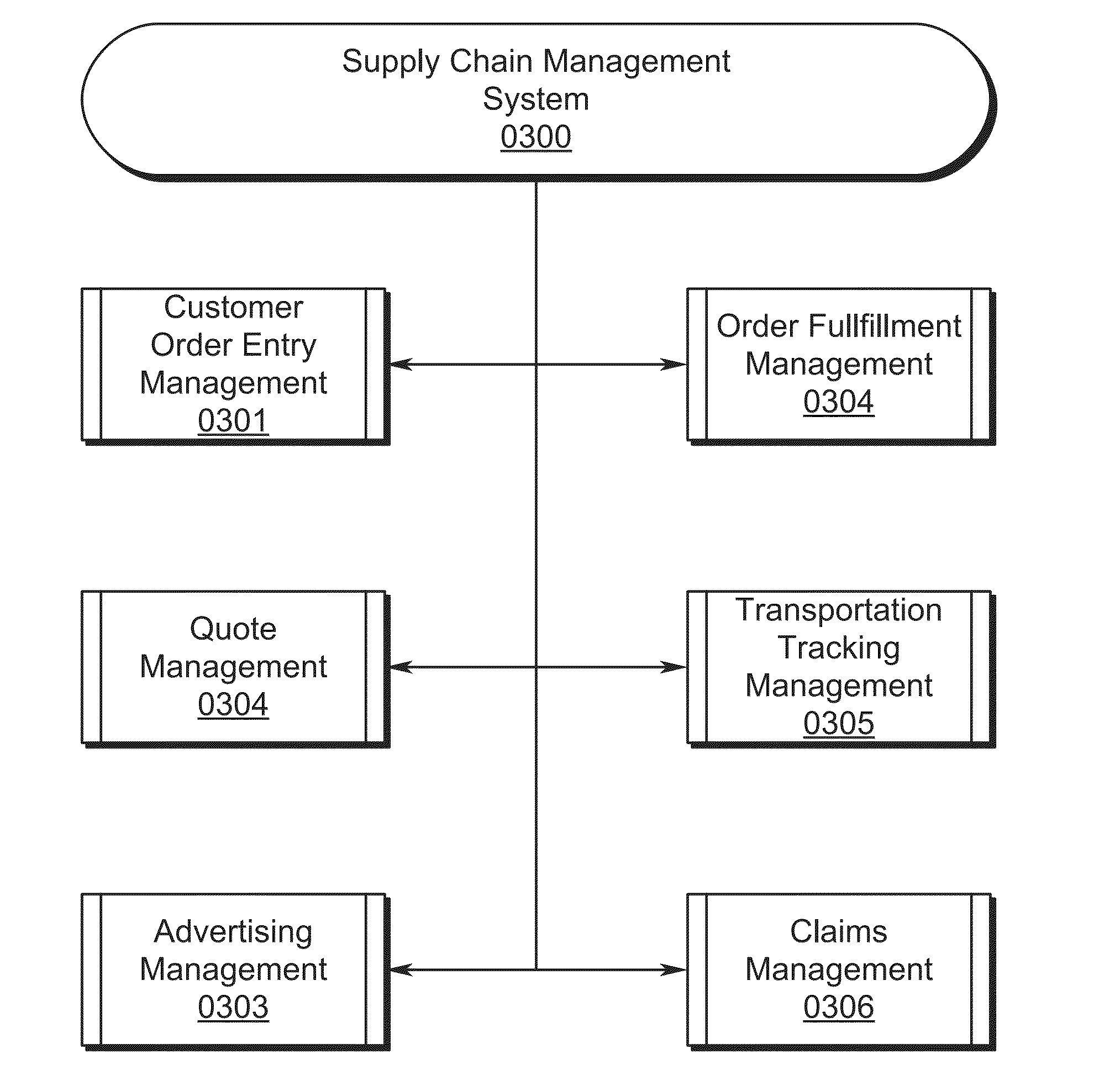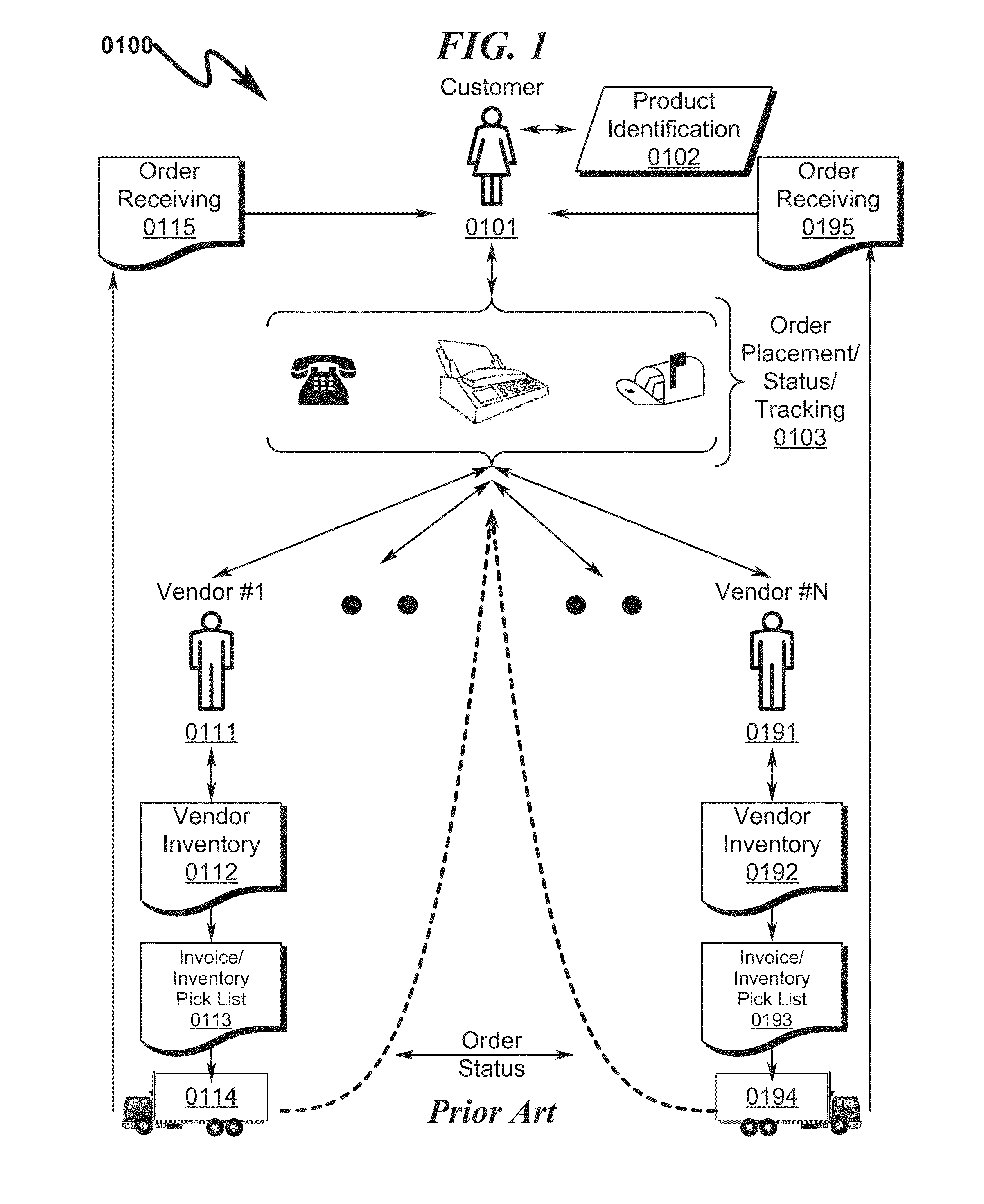It should be noted that since the ordering customer (0101) in this instance often represents a large number of repair technicians in an auto /
truck repair facility, coordinating the communication (0103) through traditional telephone / fax networks is highly inefficient and often results in significant parts delivery delays and customer / vendor
confusion that result in damage to customer / insurance relations, and lost profits for the customer auto /
truck repair facility.
Finally, the existing manual nature of the order receiving process (0115, 0195) results in significant delays and clerical errors in the receiving process, resulting in lost shop time and revenue.
This
system also suffers from inefficiencies in the matching of identified products (0102) with the resulting product inventories (0112, 0192) of the potential vendors (0111, 0191).
Since the customer (0101) must actively solicit vendors (0111, 0191) for availability / pricing for a given part, there is an inherent
delay in the response to this inquiry that introduces an overall
delay in the eventual delivery of the ordered part.
An additional complexity often present in the prior art involves
processing of manufacturer / OEM (and similarly structured) claims processing.
However, the process generally requires that the claim be reviewed / authorized / audited via a manual process (0243) that is often
time consuming and prone to error.
Often both the dealership vendor (0239) and the manufacturer (0240) have
limited access to information regarding the status of claims and historical data regarding the effectiveness of individual incentives / promotions.
In some cases, audits are performed infrequently, or not at all, due to an inefficient audit process or lack thereof.
The prior art as detailed above suffers from the following deficiencies:The part / product ordering cycle between customers and vendors currently incorporates a communication barrier that must be bridged by a number of human interventions that make the overall part / product delivery mechanism inefficient and costly.The systems and methods of the prior art generally rely on human-to-human communication between customers and vendors, resulting in an inefficient interface between these two entities.Customers often find it difficult or impossible to obtain real-time status information on a part /
product order.Vendors typically do not have the infrastructure necessary to support tracking of individual part / products for any particular customer.Customer part / product orders are often delayed as customers weigh various part / product delivery / pricing options from a number of vendors, especially when these decisions are delayed because of communication
callback delays with the vendors.Customers often do not know when a part / product is ordered whether the part / product is available from a given vendor and which vendor(s) may be the most suitable source for the given part / product.Vendor transportation infrastructures are typically not optimized with respect to customer delivery priorities and lack intelligent
route management capabilities.The manual procedures associated with part / product ordering, vendor
order fulfillment, and transportation prohibit information associated with these functions to be integrated within conventional shop management
software that may operate an optimal process flow within a given customer establishment.Vendors currently have no method of promoting their products in a context-sensitive manner to customers, as in the current vendor business model the vendors only verbally (or via fax) acknowledge orders from a customer and cannot engage in active marketing to their customer base.The processing of manufacturer claims and associated transactions involving incentives / promotions for parts / products is generally not integrated into the customer parts / products
purchasing supply chain and generally results in significant overhead for vendors to take
advantage of manufacturer incentives / promotions to increase parts / products sales.
While some of the prior art may teach some solutions to several of these problems, the core issues of integrating part / product ordering, vendor
order fulfillment, transportation tracking, and integrated vendor advertising has not been addressed by the prior art.
 Login to View More
Login to View More  Login to View More
Login to View More 


